Disclosure: This article contains affiliate links. We may earn a commission from purchases at no extra cost to you, which helps our travel content.
The morning light in Fernando de la Mora has a quality I've never encountered elsewhere – a golden warmth that seems to embrace everything it touches, from the weathered faces of local vendors to the colorful produce stacked high at the municipal market. When I first arrived in this Paraguayan city just outside Asunción, I expected a brief stopover before heading to more 'photogenic' destinations. Instead, I found myself extending my stay to a full week, captivated by the authentic rhythms of daily life and the surprising diversity of photographic opportunities. As someone who typically gravitates toward Southeast Asian waterways or Scandinavian landscapes, this pocket of Paraguay revealed itself as an unexpected treasure for my camera and soul. What began as curiosity evolved into a deep appreciation for a place where tradition and modernity dance together in the most fascinating ways.
Finding Your Photographic Rhythm in Fernando de la Mora
Fernando de la Mora operates on its own distinct tempo – one that requires photographers to slow down and attune themselves to local patterns. Unlike tourist-heavy destinations where photogenic moments seem staged for your convenience, this Paraguayan city demands patience and observation.
My first two days were admittedly frustrating. Coming from the structured efficiency of Norfolk, I found myself constantly checking my watch, wondering when the 'action' would begin. It wasn't until my third morning, sitting with a steaming cup of cocido (a traditional Paraguayan yerba mate drink with burnt sugar) at a corner café, that I finally surrendered to the city's rhythm.
The key to photographing Fernando de la Mora lies in embracing what locals call tranquilo – a relaxed approach to time and activity. Once I adjusted my expectations, photographic opportunities revealed themselves organically: elderly men playing chess in Plaza Cerro Corá's dappled shade, children practicing traditional dance at the Cultural Center, vendors arranging their wares with artistic precision at the municipal market.
For the technically minded photographer, the challenging lighting conditions here require versatility. The harsh midday sun creates strong contrasts, while the golden hours offer magical but fleeting opportunities. My variable ND filter proved invaluable for managing the bright Paraguayan sunlight, especially when shooting the bustling street scenes where I couldn't always wait for ideal lighting conditions.
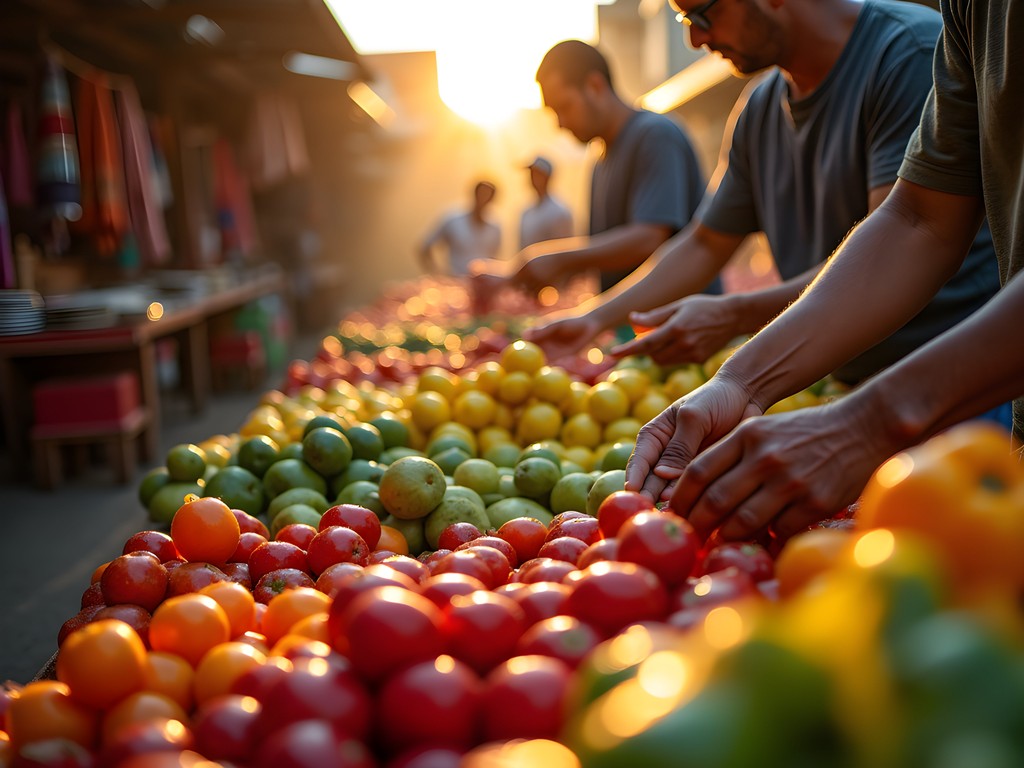
💡 Pro Tips
- The golden hour arrives early (around 5:30-6:30 AM in spring) – set your alarm accordingly for the softest light
- Sundays offer unique photography opportunities when families gather in parks and plazas after church
- Learn basic Guaraní phrases – this indigenous language is widely spoken and opens doors to authentic interactions
Urban Wildlife: Unexpected Photography Subjects
My veterinary background inevitably influences how I travel and what captures my photographic attention. While Fernando de la Mora isn't known for wildlife tourism, I discovered a fascinating urban ecosystem that provided unique photographic opportunities.
The city's parks and green spaces host surprising biodiversity. In Parque Ecológico, I spent hours photographing southern lapwings with their distinctive crests performing elaborate territorial displays. My professional knowledge of bird behavior helped me anticipate their movements, allowing me to capture intimate moments that casual observers might miss.
What truly fascinated me was documenting the relationship between Paraguayans and their animals. Unlike the rigid pet ownership structures I'm accustomed to in North America, here the boundaries are more fluid. Street dogs aren't necessarily homeless – many belong to neighborhoods rather than individuals, receiving care from multiple households. This communal approach to animal welfare creates touching scenes of intergenerational care that make for compelling photographic narratives.
One morning, I witnessed an elderly woman carefully setting out water bowls for local cats while a young boy distributed scraps to waiting dogs. The scene unfolded with such natural rhythm that I nearly missed its photographic potential. These subtle moments of human-animal connection offer insights into cultural values that grand landmarks never could.
For wildlife photography in urban settings, my telephoto zoom lens proved essential. Lightweight enough for all-day carrying yet offering the reach needed for skittish urban wildlife, it became my most-used lens throughout the week.
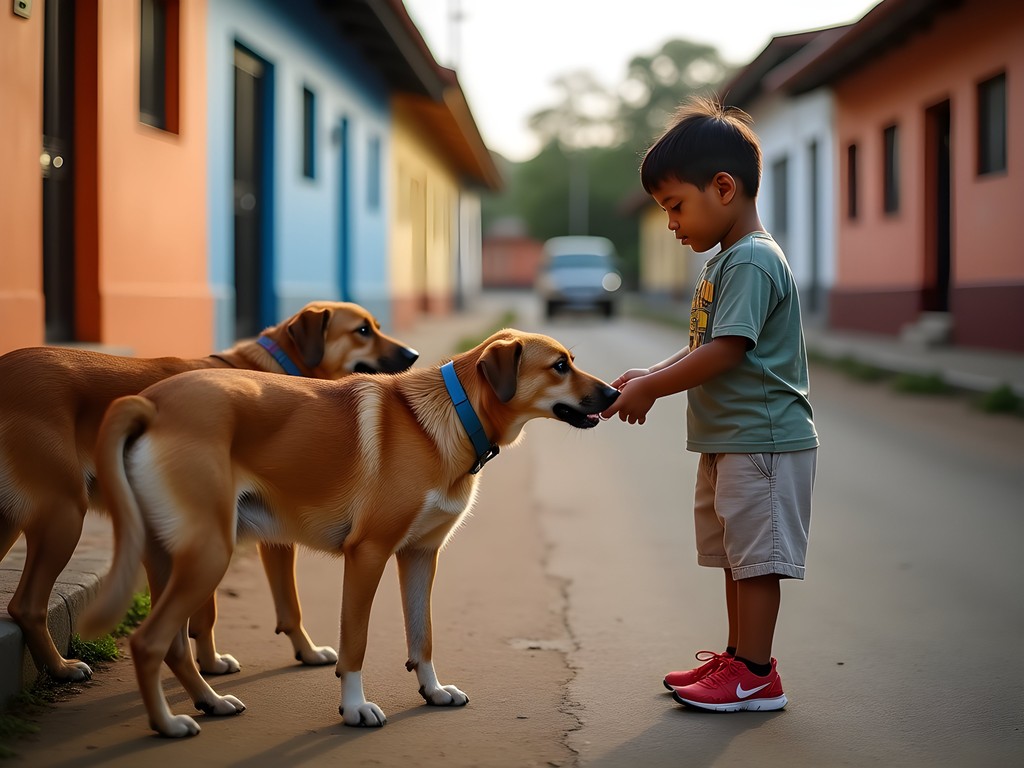
💡 Pro Tips
- Visit Parque Ecológico early morning (6-8am) when birds are most active
- Bring a small spray bottle of water to offer street dogs in hot weather – this builds trust for closer photographs
- The botanical gardens host hummingbirds year-round – use silent shooting mode to avoid startling them
Markets & Street Food: A Sensory Photography Challenge
My Filipino-Canadian upbringing instilled in me a deep appreciation for street food cultures, and Fernando de la Mora's markets presented a feast for both my palate and my camera. The challenge? Capturing the sensory experience – the aromas, textures, and flavors – through purely visual means.
The municipal market transforms throughout the day, each hour offering distinct photographic opportunities. Before dawn, vendors arrange their goods with meticulous care, creating geometric patterns of produce that beg to be photographed in the soft early light. By mid-morning, the human element takes center stage as shoppers and vendors engage in the choreography of commerce, providing endless opportunities for candid portraits and interaction shots.
Street food presents particular photographic challenges. The mouthwatering chipa guasu (corn bread) and sopa paraguaya (cheese bread) emit steam that can create atmospheric images but requires technical skill to capture properly. I found myself constantly adjusting settings to balance steam visibility with food detail.
My approach to food photography here diverged from the polished, overhead shots popular on social media. Instead, I focused on the hands preparing the food – the weathered fingers of a grandmother shaping mbejú (starch and cheese flatbread) or the practiced movements of a vendor flipping tortillas paraguayas. These images tell more authentic stories than perfectly styled plates ever could.
For market photography in variable lighting conditions, my prime lens rarely left my camera. Its fast aperture handled the dim market interiors while delivering the sharp, intimate images I sought. The fixed focal length also forced me to move physically closer to my subjects, encouraging genuine interactions rather than shooting from a distance.
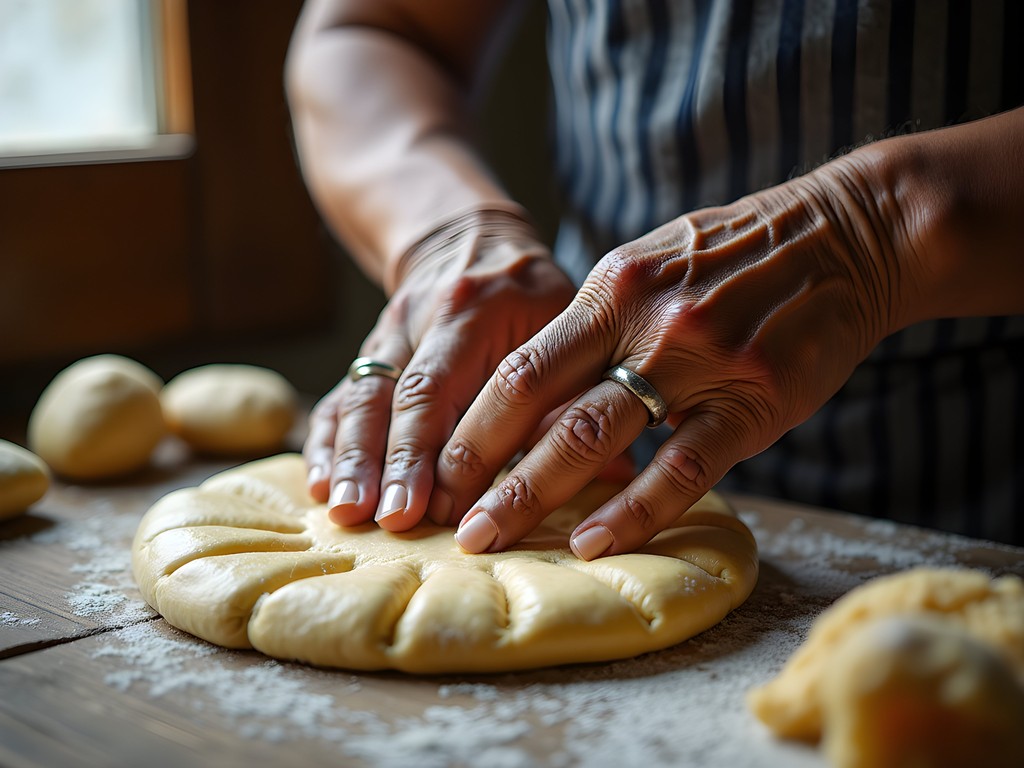
💡 Pro Tips
- Always ask permission before photographing vendors or their goods – a simple gesture and 'puedo?' (can I?) is sufficient
- Purchase something small from vendors before photographing their stalls – it's both courteous and opens conversation
- The light between food stalls creates dramatic beams around 10-11am – position yourself to capture this natural spotlight effect
Cultural Celebrations: Timing Your Visit for Photographic Gold
My spring visit to Fernando de la Mora coincided with several cultural celebrations that provided extraordinary photography opportunities. The timing was partly luck, partly research – a reminder that understanding a destination's cultural calendar is as important as knowing its geography.
The Festival de San Juan, though smaller than its counterparts in larger Paraguayan cities, offered intimate access to traditions that larger events often lose. The kamba ra'anga (blackened faces) ritual, where participants cover their faces with charcoal and dance through streets, creates striking visual contrasts that practically compose themselves. By developing rapport with participants before the festivities began, I gained permission to photograph moments that tourists with telephoto lenses could never access.
What surprised me most was how my veterinary background again opened unexpected doors. When locals learned of my profession, I was invited to document the blessing of animals at the Iglesia San Francisco. Families brought everything from beloved dogs to farm animals for the annual blessing, creating a fascinating juxtaposition of the sacred and mundane that yielded some of my favorite images from the entire trip.
School performances occur regularly during spring, with children performing traditional dances in colorful attire. The Cultural Center hosts these events most Friday afternoons – arrive early to speak with organizers about photography permissions. The genuine pride on the children's faces as they perform dances passed down through generations creates emotional portraits that capture Paraguayan cultural resilience.
For these dynamic cultural events, my camera bag proved its worth repeatedly. Its side-access design allowed me to change lenses quickly without missing fleeting moments, while the weatherproofing protected my gear during an unexpected afternoon downpour at an outdoor celebration.

💡 Pro Tips
- Research religious and cultural festivals before your trip – even small celebrations offer authentic photography opportunities
- Attend practice sessions before performances – these often yield more natural, candid images than the formal events
- Carry small prints from previous days to give to subjects – this builds goodwill and often leads to invitations to more intimate gatherings
Architectural Contrasts: Beyond the Obvious Shots
Fernando de la Mora's architecture tells a story of contrasts – colonial influences alongside mid-century developments and contemporary structures. While lacking the postcard-perfect buildings of Asunción, this very authenticity offers photographers something more valuable: visual narratives of everyday Paraguayan life.
The city's residential architecture particularly captivated me. Homes here often feature vibrant exterior colors that pop beautifully in photographs, especially during the golden hour. Many families personalize their spaces with elaborate gardens, religious shrines, or unique decorative elements that reveal cultural values and personal histories.
I developed a mini-project documenting doorways throughout the city – each entrance telling its own story through color choices, security features, religious symbols, and signs of wear. This focus on architectural details rather than grand facades yielded a more intimate portrait of the community than I initially expected.
The municipal buildings around Plaza Cerro Corá demonstrate the city's evolution through architectural styles. The contrast between the ornate colonial-influenced town hall and the stark modernism of newer government buildings creates compelling compositional opportunities, particularly when framing one style against the other.
For architectural photography, I frequently switched to my wide angle lens to capture building facades while maintaining context. The fast aperture proved valuable for interior shots of the beautiful Iglesia San Francisco, where tripods weren't permitted but the dramatic light demanded documentation.
What makes Fernando de la Mora architecturally interesting isn't grand monuments but the authentic juxtapositions – satellite dishes mounted on colonial-style homes, ultra-modern internet cafés nestled between traditional markets, and religious iconography adorning otherwise contemporary structures. These contrasts tell the story of a place in transition far more effectively than any single landmark could.

💡 Pro Tips
- Shoot architectural details during mid-morning when shadows add definition without overwhelming contrast
- Look for reflections in building windows that create compositions showing both traditional and modern elements simultaneously
- The area around Plaza Cerro Corá offers the densest concentration of architectural styles within walking distance
Final Thoughts
As I pack away my camera on my final evening in Fernando de la Mora, I find myself reflecting on how this unassuming Paraguayan city challenged my photographic approach. The greatest images weren't found at famous landmarks or scenic overlooks, but in patient observation of daily rhythms and genuine human connections. My scientific background as a veterinarian opened unexpected doors, reminding me that our unique perspectives as travelers often become our greatest assets. For photographers seeking authentic cultural documentation rather than social media trophies, Fernando de la Mora offers rich rewards to those willing to slow down and truly see. I leave with memory cards full of images that tell stories of resilience, community, and tradition – photographs that capture not just how a place looks, but how it feels to be there. What more could a travel photographer ask for?
✨ Key Takeaways
- Fernando de la Mora rewards photographers who embrace slower rhythms and local patterns
- Morning golden hour (5:30-6:30am) offers the most magical light for both street photography and architectural shots
- Building relationships with locals opens access to authentic cultural moments impossible to capture as a distant observer
📋 Practical Information
Best Time to Visit
Spring (September-November)
Budget Estimate
$50-75/day including accommodation, food and local transportation
Recommended Duration
5-7 days
Difficulty Level
Intermediate
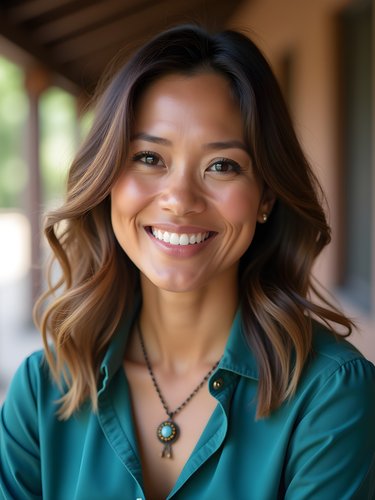
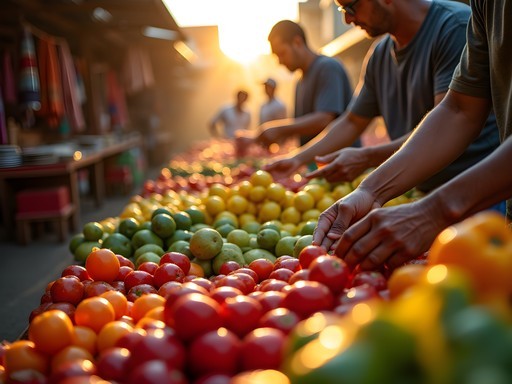
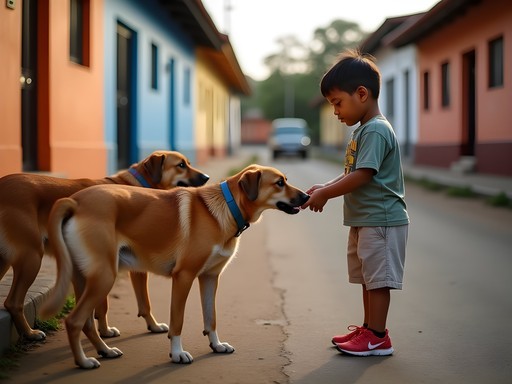
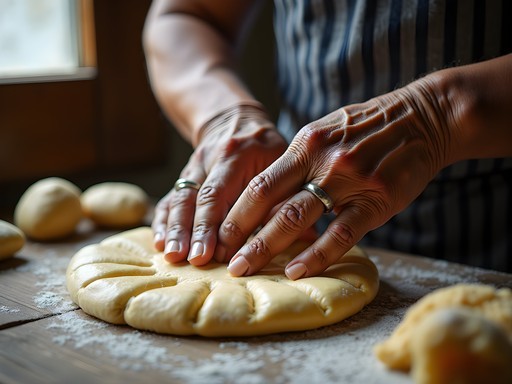
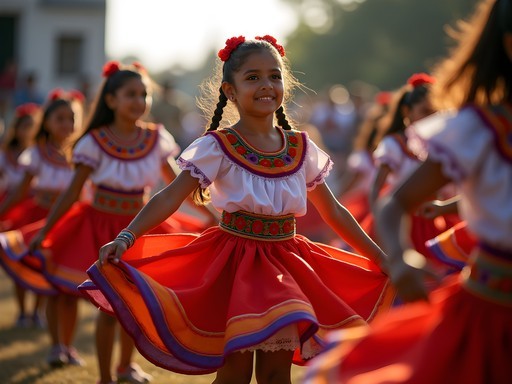
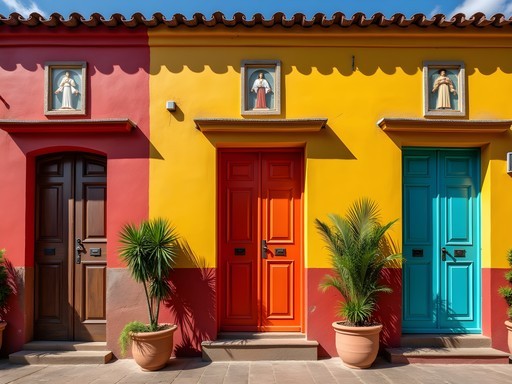




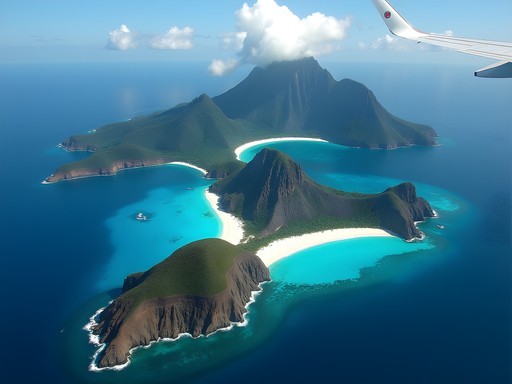

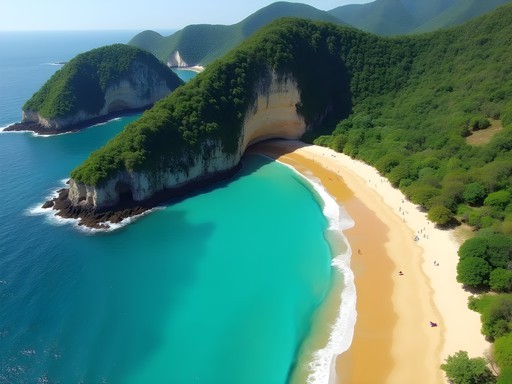

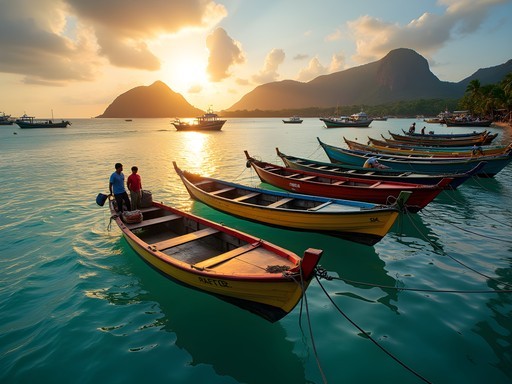

Comments
Amit Sullivan
Casey, your piece beautifully captures what makes Fernando de la Mora special - that quality of being simultaneously overlooked yet full of photographic treasures. During my cultural documentation work across Paraguay last year, I found this city to be one of the most authentic glimpses into everyday Paraguayan life. Your section on 'Finding Your Photographic Rhythm' is spot-on. The city operates on its own distinct tempo, and forcing a shooting schedule simply doesn't work here. For those planning to visit, I'd add that the small religious festival in early October (San Francisco de Asís) offers incredible photographic opportunities with processions and traditional dress that few outsiders ever witness. The contrast between ancient tradition and modern urban life creates compelling visual stories. Brilliant work capturing a place that deserves more attention from thoughtful photographers.
Casey Torres
Amit, I'm honored by your thoughtful comment! I completely missed the San Francisco de Asís festival - sounds like I need to plan a return trip in October. Your cultural documentation work sounds fascinating - anywhere I can see your Paraguay portfolio?
journeywalker
Great post! I'm planning a 2-week trip through Paraguay and wondering if Fernando de la Mora is worth staying overnight or better as a day trip from Asunción? Safety concerns for a solo photographer with gear?
Amit Sullivan
Not the author, but I can share my experience from last year. Fernando de la Mora is definitely worth at least one overnight stay - the morning and evening light Casey mentions is no exaggeration. I found it perfectly safe as a solo traveler with camera gear, though I stayed in the central area and used common sense (no flashy camera bags, etc). There's a small guesthouse run by a photographer named Miguel near the main plaza that caters to photography enthusiasts - basic but clean and he knows all the best spots!
journeywalker
Thanks Amit! That's exactly what I needed to know. Will look up Miguel's place!
greenperson3930
This post captures Fernando de la Mora perfectly! I visited last year and was also struck by that special quality of light you described. One tip for anyone heading there: the Central Market is fantastic for photography, but go EARLY (like 6am) when they're setting up. The morning chaos, combined with that golden light Casey mentioned, makes for incredible shots. Also, the small park near the municipal building often has elderly folks playing chess and dominoes in the afternoon - they make for wonderful portrait subjects if you ask politely. Thanks for bringing back great memories with this post!
Savannah Walker
Casey, your post transported me right back to my time in Paraguay! I spent a week in Fernando de la Mora three years ago and was similarly captivated by the authenticity. The section about 'Urban Wildlife' resonated so much - I remember sitting in that same central plaza watching those incredible birds while locals went about their day completely unfazed. One tip for photographers heading there: the weekend markets are much more vibrant than weekday ones, but for more intimate portraits, Tuesday mornings seemed to have fewer tourists and more genuine local interactions. I used my peak design strap constantly as I was always ready to capture spontaneous moments while staying comfortable in that heat. Can't wait to see where your lens takes you next!
greenadventurer
Is it safe to walk around with expensive camera gear there? Planning a trip to Paraguay next spring.
greenperson3930
Not Casey but I was there in January. It's generally safe during daylight hours in most areas. I carried my DSLR everywhere without issues, but used a non-descript bag and stayed aware of my surroundings. The markets Casey mentioned are busy but I never felt unsafe. Just use common sense like anywhere else!
Casey Torres
Exactly what @greenperson3930 said! I felt comfortable most places during the day. I'd just add that having a local guide for some of the less touristy areas can be helpful, not just for safety but for accessing places you might not find otherwise.
coffeebuddy
What camera setup did you use for these shots? The colors are amazing!
Casey Torres
I used my trusty Sony A7III with mostly the 24-70mm f/2.8 for street scenes and the 85mm f/1.8 for portraits. The morning light in Paraguay does most of the heavy lifting though!
coffeebuddy
Thanks! I've been looking at the Sony system. Might need to invest before my next trip!
wildqueen
These photos are breathtaking! Never considered Paraguay before but now it's on my list!
luckyexplorer
Just got back from Paraguay last month and I'm kicking myself for missing Fernando de la Mora! Those market shots are incredible, Casey. I spent most of my time in Asunción and the way you captured that golden morning light makes me want to plan another trip. Did you find it difficult to photograph locals or were people generally open to having their picture taken?
journeywalker
I'm curious about this too! Planning a photography trip to Paraguay next year and wondering about the etiquette.
Casey Torres
Thanks for the kind words! Most locals were surprisingly open to being photographed, especially if you take time to chat with them first (even with basic Spanish). Market vendors were particularly friendly - I'd often buy something small and then ask permission. The morning light between 6-8am is absolutely worth waking up early for!
escapeninja
OMG those market photos are INCREDIBLE! The colors are so vivid! Adding Fernando de la Mora to my bucket list right now!
Bryce Diaz
Your post brought back memories of my time in Fernando de la Mora last year! I was completely unprepared for how photogenic the ordinary moments would be there. I spent three days just wandering the markets you mentioned, and ended up with some of my best portfolio shots. That section about 'finding your photographic rhythm' really resonates - it took me a full day to slow down and tune into the city's pace. Did you find the locals receptive to being photographed? I found most were incredibly welcoming once I spent time chatting with them in my broken Spanish.
Casey Torres
Absolutely, Bryce! I found that spending time building rapport first made all the difference. Most vendors were happy to be photographed after a brief conversation and showing genuine interest in their work. Did you make it to any of the local festivals?
Bryce Diaz
I caught a small neighborhood saint's day celebration but missed the major festivals. Next time I'm bringing my travel tripod for those night festival shots. The low light dancing scenes looked amazing in your post!
Venture X
Premium card with 2X miles, $300 travel credit, Priority Pass